Guest Post: Picking a Genre is No Easy Task by Author Anne Montgomery...
The moment I mention the impendingarrival of a new book, prospective readers ask, “What’s the genre?”
“Well, um…it’s hard to say,” Irespond, staring at my shoes, wondering why such a simple question has noequally simple answer.
I have a tendency to write storieswithout giving thought to where they might fit in literary culture. Sofar, my titles have been variously listed as soft-thriller, contemporaryfiction, romantic suspense, historical fiction, women’s fiction, and youngadult fiction. So you can see why labeling my work tends to make my head spin.
Still, identifying a genre for yournovel is important.
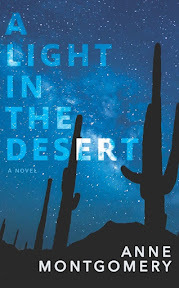
A Light in the Desert is asuspense novel.
“We use genre as a way to identify thecategory of a book. Where it should be sold in a store. Or who its competitionwill be,” long-time literary agent Steve Laub wrote in his blog article DoesGenre Matter? “The best way to describe it is to say that publishers andbooksellers sell books out of boxes. The boxes are labeled “Romance” “Thriller”“Mystery” etc. Before we resist that exercise I would claim that we consumersbuy books out of those boxes. It is quite possible that the boxes were createdby us (the consumers).”
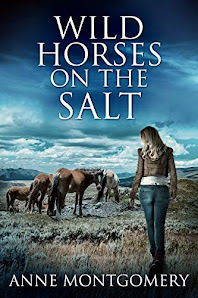
Wild Horses on the Salt has been called women’s fiction and suspense with a touch of romance.
There is some dispute about which English book should becalled the first novel. Some believe Miguel de Cervantes’ Don Quixote of La Mancha, published in 1605,deserves the honor. Others opine that Daniel Defoe’s 1719 Robinson Crusoe should get the nod. Either way,neither author had to think too hard about genre.
“In 1719, when “Robinson Crusoe” appeared, many peopleconsidered “the novel,” in itself, to be a genre,” said Joshua Rothman inhis The New Yorker article titled A Better Way toThink About The Genre Debate. “The novel was a new thing—a long, fictitious,drama-filled work of prose—and its competitors were other prose genres:histories, biographies, political tracts, sermons, testimonies about travel tofar-off lands. What set the novel apart from those other prose genres was itsostentatious fictitiousness.”
Clearly, modern-day authors can findlabeling their work infinitely more complicated than those early novelists. Look at today’s overwhelming number of possible fiction genres. The BookIndustry Study Group’s list of fiction topics includes approximately 140genres, all of which can be combined in what seems like a never-ending numberof possibilities.
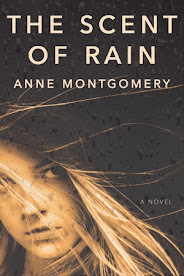
The Scent of Rain was marketed as young-adult fiction.
I’ll admit, sometimes I’m jealous ofmy romance-writer friends, their covers bursting with muscled torsos andover-flowing bodices that leave not a hint of confusion about what type ofstory resides inside. Still, as difficult as pinning down that perfect genremight be, there’s no way around it, especially if you want to contact agents,or publishers, or editors, or reviewers, because those folks are prettyspecific about the types of book they’re interested in. If you want to beconsidered an amateur in the publishing world, go ahead and send a query aboutyour sci-fi, apocalyptic, young adult romance to someone who has made cleartheir genre of choice is Regency historical fiction. (And you werewondering why you hadn’t heard back.)
While some authors may be tempted to leave the genredecision to others, remember you wrote the book. You know the story and thecharacters better than anyone. Ultimately, you should choose. An article on theblog Rock Your Writing called How To Figure Out Your Book’s Genre suggests youconsider, “who is the mostly likely to seek out thisparticular type of book, buy this typeof book, and enjoy this type of book.”
While the decision on genre is yours,it’s the reader we authors need to consider, because, as Laub pointed out, ifour “baby” is in the wrong box, maybe those readers won’t find it.
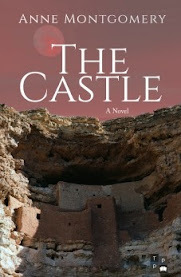
The Castle is contemporary women’s fiction/suspense
A reporter seeksinformation on an eleventh century magician and discovers that black marketsales of antiquities can lead to murder.
In 1939, archaeologistsuncovered a tomb at the Northern Arizona site called Ridge Ruin. The man,bedecked in fine turquoise jewelry and intricate beadwork, was surrounded bywooden swords with handles carved into animal hooves and human hands. The Hopi workersstepped back from the grave, knowing what the Moochiwimi sticks meant. Thisman, buried nine-hundred years earlier, was a magician.
Former television journalist Kate Butler hangs on to herinvestigative reporting career by writing freelance magazine articles. Herresearch on The Magician shows he bore some European facial characteristics andphysical qualities that made him different from the people who buried him. Herquest to discover The Magician’s origin carries her back to a time when thehigh desert world was shattered by the birth of a volcano and into thepresent-day dangers of archaeological looting where black-market sales of antiquitiescan lead to murder.
This is my latest release. It’s Native American Literature andU.S. Historical Fiction. Picking a genre definitely is not easy.
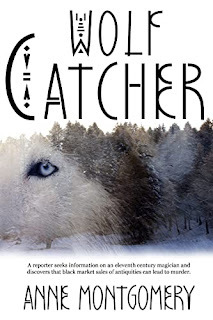
The past and present collide when a tenacious reporter seeks information on an eleventh century magician…and uncovers more than she bargained for.
In 1939, archeologists uncovered a tomb at the Northern Arizona site called Ridge Ruin. The man, bedecked in fine turquoise jewelry and intricate bead work, was surrounded by wooden swords with handles carved into animal hooves and human hands. The Hopi workers stepped back from the grave, knowing what the Moochiwimi sticks meant. This man, buried nine hundred years earlier, was a magician.
Former television journalist Kate Butler hangs on to her investigative reporting career by writing freelance magazine articles. Her research on The Magician shows he bore some European facial characteristics and physical qualities that made him different from the people who buried him. Her quest to discover The Magician’s origin carries her back to a time when the high desert world was shattered by the birth of a volcano and into the present-day dangers of archeological looting where black market sales of antiquities can lead to murder.
Former television journalist Kate Butler hangs on to her investigative reporting career by writing freelance magazine articles. Her research on The Magician shows he bore some European facial characteristics and physical qualities that made him different from the people who buried him. Her quest to discover The Magician’s origin carries her back to a time when the high desert world was shattered by the birth of a volcano and into the present-day dangers of archaeological looting where black market sales of antiquities can lead to murder.
Amazon Buy Link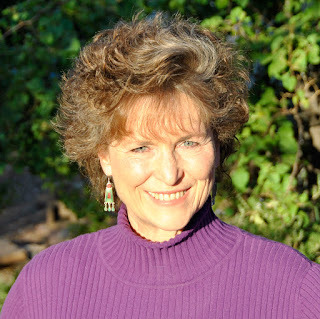 Anne Montgomery has worked as a television sportscaster, newspaper and magazine writer, teacher, amateur baseball umpire, and high school football referee. She worked at WRBL‐TV in Columbus, Georgia, WROC‐TV in Rochester, New York, KTSP‐TV in Phoenix, Arizona, ESPN in Bristol, Connecticut, where she anchored the Emmy and ACE award‐winning SportsCenter, and ASPN-TV as the studio host for the NBA’s Phoenix Suns. Montgomery has been a freelance and staff writer for six publications, writing sports, features, movie reviews, and archeological pieces.
Anne Montgomery has worked as a television sportscaster, newspaper and magazine writer, teacher, amateur baseball umpire, and high school football referee. She worked at WRBL‐TV in Columbus, Georgia, WROC‐TV in Rochester, New York, KTSP‐TV in Phoenix, Arizona, ESPN in Bristol, Connecticut, where she anchored the Emmy and ACE award‐winning SportsCenter, and ASPN-TV as the studio host for the NBA’s Phoenix Suns. Montgomery has been a freelance and staff writer for six publications, writing sports, features, movie reviews, and archeological pieces. When she can, Anne indulges in her passions: rock collecting, scuba diving, football refereeing, and playing her guitar.
Learn more about Anne Montgomery on her website and Wikipedia . Stay connected on Facebook , Linkedin , and Twitter .



